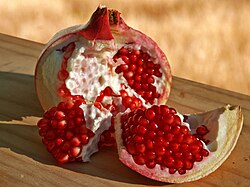The topic of this article may not meet Wikipedia's general notability guideline .(May 2023) |

The pomegranate ellagitannins, which include punicalagin isomers, are ellagitannins found in the sarcotestas, rind (peel), bark or heartwood of the pomegranate fruit (Punica granatum).